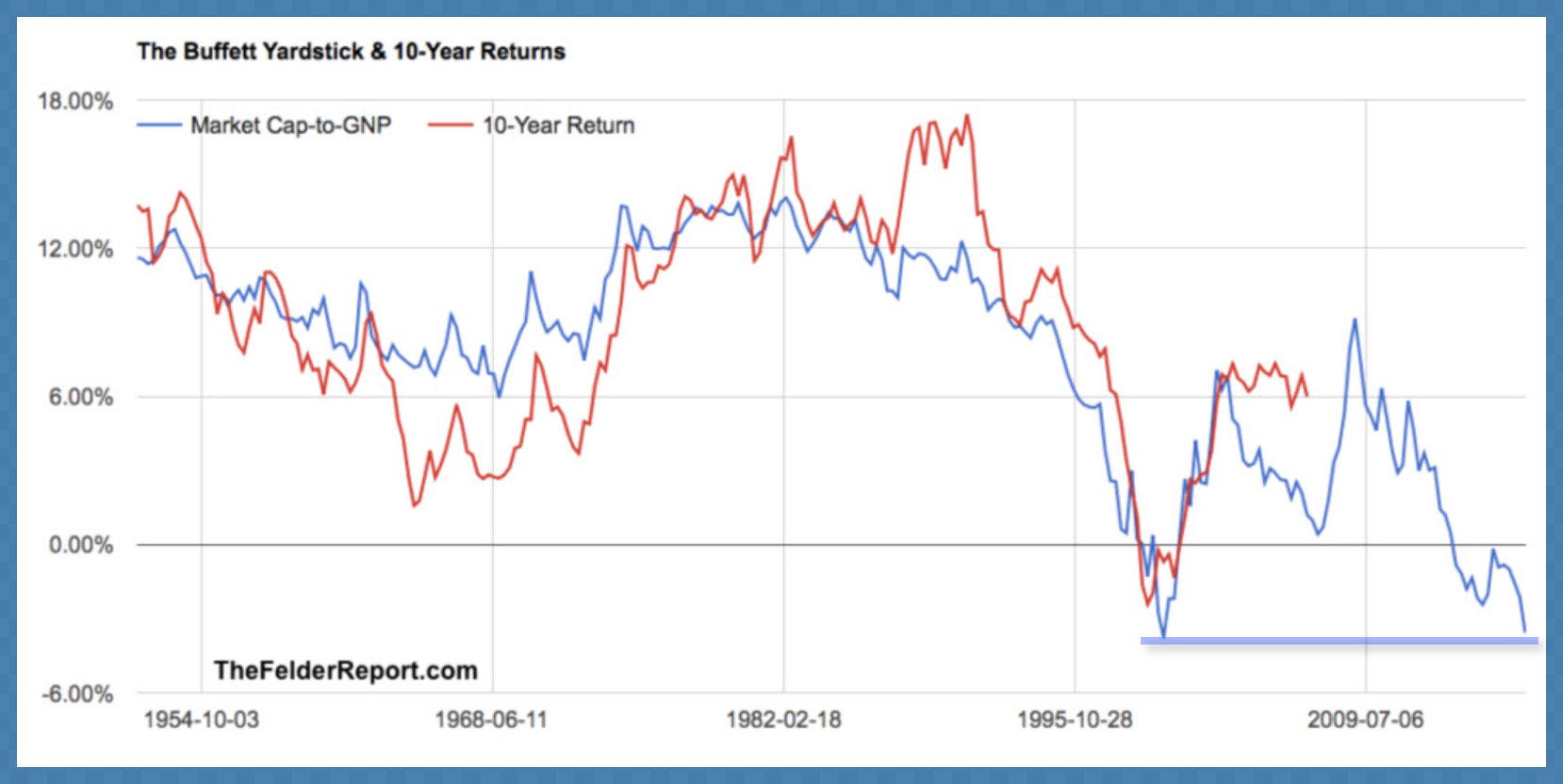This chart shows one of the most historically useful valuation gauges for equities–market capitalization to gross national product (inverted scale in blue) since 1954, along with subsequent 10-year investment returns from each point (in red).

What we can see is that at the market peak in 2000 (inverted), 10-year equity return prospects were negative (and stocks did in fact have negative returns between 2000-2010), and once again today, valuations are back at a similar all-time high, with return prospects also negative out to at least 2027 from here. Believe it or not. This is the math. We must find the courage to see it even as central banks and most financial gurus do not.
Yet, as explained by Grant Williams in this interview, counter-intuitively most investors (individuals and institutions) have responded to low fixed income yields over the past 8 years by increasing their exposure to the most dangerously over-valued, negative-return-prospect assets. This is a bad trade, for which they are likely to pay heavily once mean reversion completes this cycle. Here is a direct video link.
Most financial ‘advisors’ and pension boards have aided and abetted these disastrous decisions in order to keep collecting their fees and keep the dream of easy money alive. But this dream is likely to prove a nightmare for all concerned.
For present holders, coming losses are likely to endure for years to come, just as an aging population is wanting and needing cash to live. The only way to protect savings from this costly conclusion is to stand clear of the highest risk equities and debt assets now and wait for the inevitable liquidation sale to resume. Yes we can.
See: World’s Major Economies to come up $400 trillion short on retirement savings:
Longer life spans and disappointing investment returns will help create a $400 trillion retirement-savings shortfall in about three decades, a figure more than five times the size of the global economy, according to a World Economic Forum report.
That includes a $224 trillion gap among six large pension-savings systems: the U.S., U.K., Japan, Netherlands, Canada and Australia, according to the report issued Friday. China and India account for the rest.


